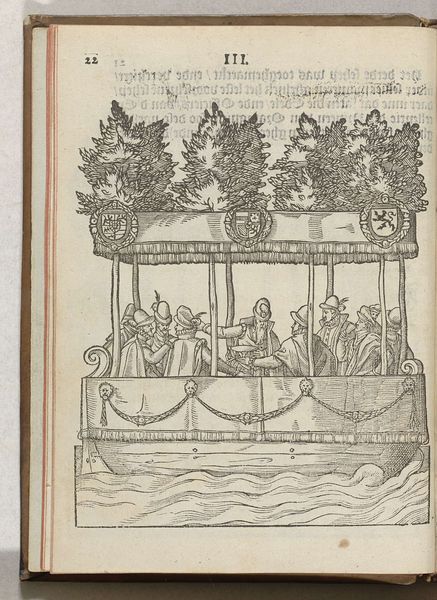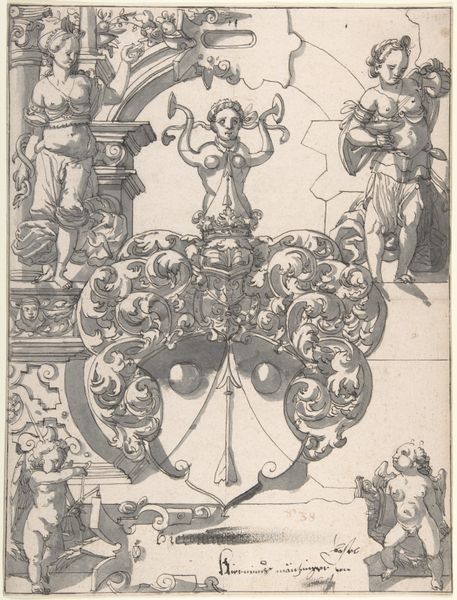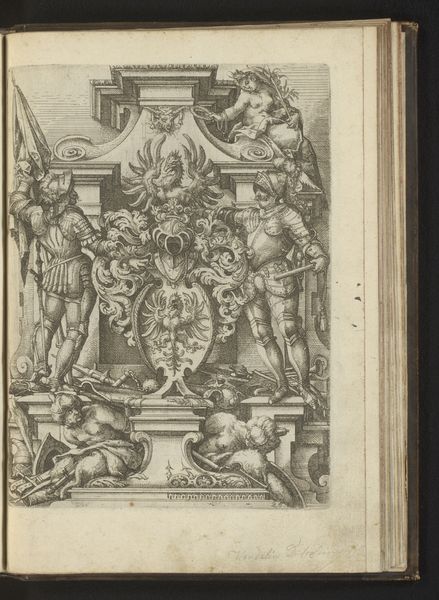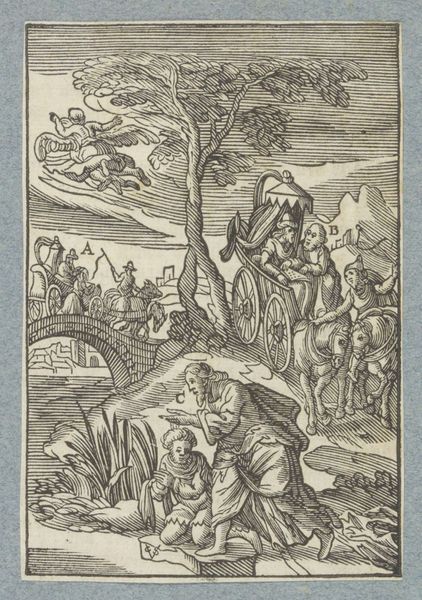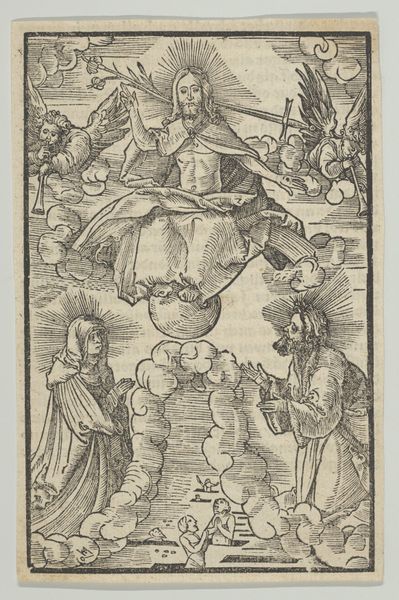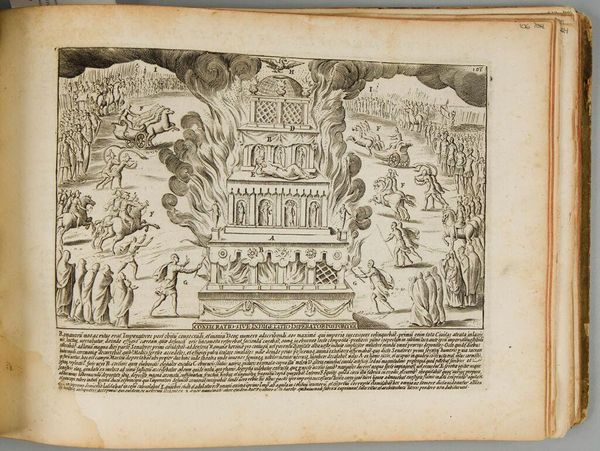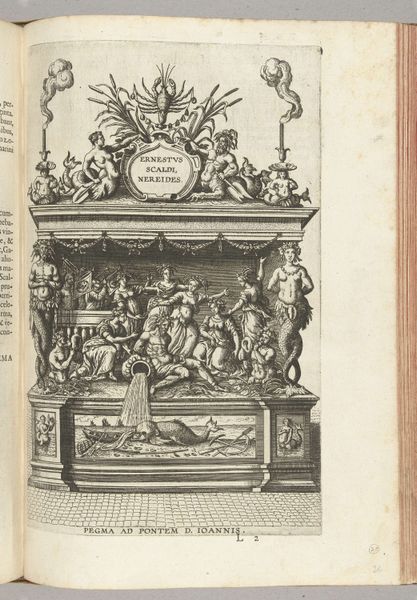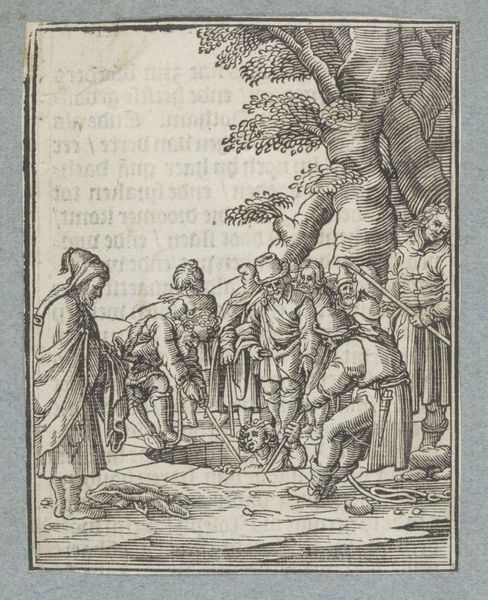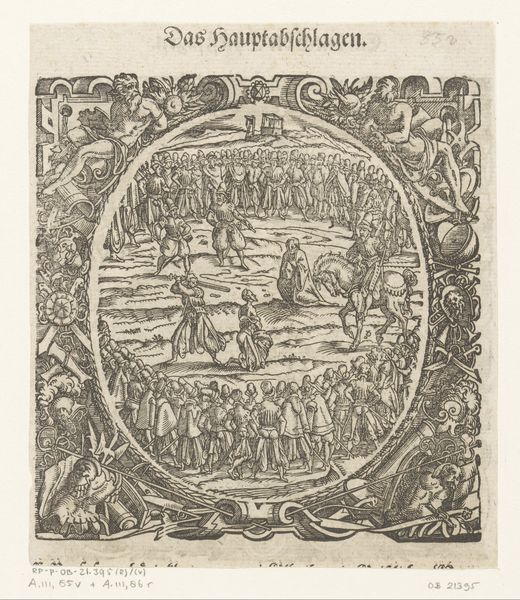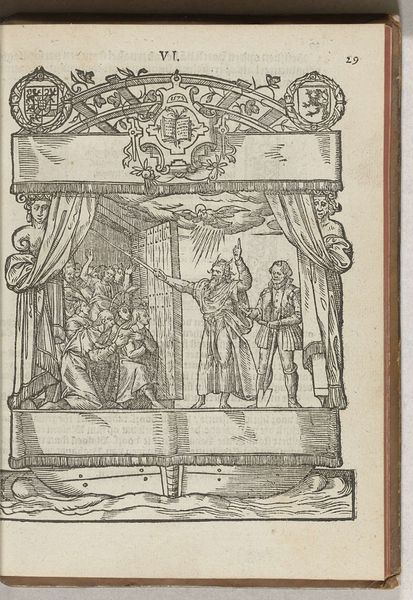
print, engraving
# print
#
landscape
#
figuration
#
11_renaissance
#
line
#
history-painting
#
northern-renaissance
#
engraving
Dimensions: height 117 mm, width 150 mm
Copyright: Rijks Museum: Open Domain
Curator: Immediately, I see the careful work of the engraver—look at those lines creating depth and motion! The rendering of the waves especially catches my eye. Editor: Indeed! This engraving from 1577, titled "A Galley with Secular and Religious Gentlemen," by Antoni van Leest, offers a fascinating glimpse into the society of its time. The stately figures contrast sharply with the obvious labor that powers their vessel. Curator: That contrast is key. The opulence above deck—indicated by the trees bearing what appear to be family crests or heraldic symbols—literally rests upon the backs of the oarsmen below. Are those clergymen amongst the passengers? Editor: Yes, we can see both secular and religious leaders represented on the galley. It points to the interconnectedness of church and state, how intertwined these powers were. But it seems that even such distinguished guests had to share space with armed guards! A real snapshot of power relations on the move. Curator: Absolutely. And the choice of a galley, powered by human force, emphasizes that hierarchy, a command structure made manifest in physical exertion. Is it an allegory, perhaps? Or more like a historical document? Editor: Likely both. Prints like these often served multiple purposes. They spread information, visualized power, and shaped public perception. The artist clearly considered the symbolic value of the ship and its inhabitants in the societal framework. You have a visual symbol about social stratification and dependence in the Netherlands. Curator: And it's fascinating to consider how prints like this—produced with such careful labor—would have circulated, contributing to broader discussions about wealth, governance, and the distribution of power in a world undergoing massive change. Editor: It makes one think about the material conditions required for such an image to exist at all; the artisan's skill, the availability of paper and ink, and of course, a system that valued—and consumed—this kind of visual propaganda. This image may be a luxury good in and of itself but depicts the necessity for servitude to obtain it. Curator: Thank you for opening my eyes to that dimension, as always. It's easy to focus on the historical narrative but important to remind ourselves of production. Editor: My pleasure. This careful combination of line, form and the socioeconomic environment has shown me new perspectives and details that one might miss in a less meticulous printmaking practice.
Comments
No comments
Be the first to comment and join the conversation on the ultimate creative platform.



